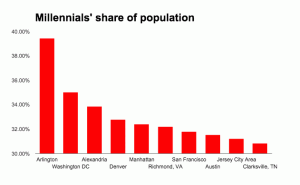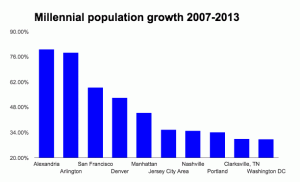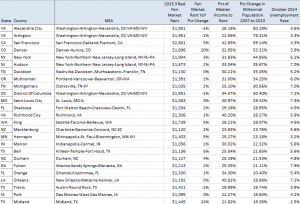From the Record:
First-time buyers key to housing
Joy Abma, 23, and Dan Charnesky, 24, expected to rent an apartment after their wedding this spring.
But when they looked at the high rents — and the difficulty of finding a place that would take their three dogs — they decided to try to buy a home instead. “We had been saving for a very long time, so we ended up with enough money for a down payment,” said Abma, a nurse who lives in Wyckoff.
After several months of looking, she and Charnesky, a landscaper, are to close on an Oakland split-level house this month. “We thought, ‘We might as well do it while we’re young,’ ” Abma said.
But buying a home when you’re young is more difficult than ever. Thanks to high student debt, stricter mortgage standards and years of slow employment and income growth, people in their 20s and 30s have found it tough to get their first toehold in homeownership — and that’s a problem for the whole real estate market. Without enough first-timers to jump-start a chain of purchases, homeowners can’t trade up to their second and third homes.
First-timers may return to the market in greater numbers this year, however, according to some analysts, who point to low interest rates, a stronger job market and high rents, all of which make buying more attractive.
But in 2014, first-timers made up about 33 percent of buyers — the lowest share in nearly three decades, and well below the historic average of about 40 percent, according to a survey by the National Association of Realtors.
…
A recent study by the Federal Reserve Bank of New York found that only 32 percent of 30-year-olds owned their homes in 2013, down from 44 percent in 2006-07, before the recession hit. The drop is especially notable among people with student debt, the New York Fed said.The millennial generation is “not entering the housing market as purchasers or renters at anywhere near where prior cohorts have done,” said Patrick O’Keefe, an economist with CohnReznick, an accounting firm in New York and Roseland. “One of the reasons is the soft job market, and relatively little income growth for those who have jobs.” In addition, he said, they’re “burdened with significant debt, primarily student debt.”
…
But recent research suggests that young adults would be very interested in homeownership — if they could afford it. A recent survey of people age 18 to 29 by the Demand Institute, which studies consumer demand around the world, found that 24 percent already owned their homes, and 60 percent plan to buy someday. And three in four believe ownership is an excellent investment. But 44 percent think it will be difficult to qualify for a mortgage.
…
Who they are, what they didFirst-timer median age was 31.
One in 10 bought a condo or town house.
One in four said saving for a down payment was difficult.
Of those, 57 percent said student loans delayed saving.
Four out of five used their own savings.
One in four received a gift from a friend or relative.
More than nine out of 10 chose a fixed-rate mortgage.



